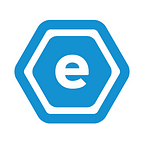What is Google’s Knowledge graph and why you should be using it for marketing?
If you have used Google to search for a service or a company, you will have seen Google’s knowledge graph. It is the information box located to the right of a Google search results page (SERPs).
Added to the SERP’s in 2012, the knowledge graph is Google’s way of improving it’s service and user experience — carefully selecting relevant information about your search term and placing it in an easy-to-read box.
A knowledge graph can contain multiple features dependant on what the search query was. If the search is for a business, it will likely show images, an address, hours of operation, reviews and a Google Maps listing, which will be discussed later in the article.
If you search for a famous person however, the data varies and instead, provides information about the individual. In an example of ‘David Beckham’, the knowledge graph provides information about his birth date, his family, links to his social profiles and some related search queries.
- Think about the service that Google search provides. If you are searching for a person or a business, you are likely to want specific information related to that search term. The knowledge graph aims to provide this information as quickly and effectively as possible, thus making Google a quick, efficient and resourceful tool.
The positive and negative effects of the knowledge graph
The positives are simple — The knowledge graph provides quick, relevant information about your search term.
The negatives however, are things that outside the digital marketing world, you may not have considered.
Site traffic is a ranking factor and, before 2012, if users wanted to find information about their search query, they would need websites to do so. However, post 2012 and post the knowledge graph, users don’t need to use websites as often because the information is provided by Google. Thus, in some respect, certain websites are no longer needed.
Wikipedia’s purpose is to provide information and, when searching for dates of birth, family members or a filmography, there is likely no better site. Although Wikipedia is by no means struggling for website traffic, the knowledge graph provides much of the information Wikipedia does, and has therefore removed the need to click onto the website.
With this in mind, you want to make sure you are making the most of the knowledge graph and, if people are no longer needed to click onto your website, you must ensure the information that you provide in your knowledge graph is relevant and informative.
How to make the most of the knowledge graph
As a business owner, you want to make sure your knowledge graph is providing as much information as possible. More importantly however, you want to make sure that a knowledge graph appears when a user types in your business name or searches for your service. SEO can help with this, but the knowledge graph is essentially the most effective tool to use. Here’s how to create a knowledge graph:
Google My Business
Previously Google+, Google My Business allows you to set up your knowledge graph listing. Within it, you provide details about your address, your opening hours, your telephone numbers and your website URL. It also gives you an opportunity to post images and photographs, generally around the service you provide, your logo, your shop front etc.
The Google My Business page sets the basic foundations for your knowledge graph.
Reviews
Testimonials and user reviews have always been a great marketing tool to take advantage of. After all, positive feedback and testimonials are some of the strongest and influential marketing tools available.
The Google knowledge graph allows you to show these reviews and testimonials, available for all to see.
Encouraging your users to leave feedback on your business via Google is a great way to increase positivity around your service, and it only takes seconds to leave a review.
Politely ask your users to visit https://www.google.co.uk/maps, search for a business and click ‘write a review’. Once verified, the review will then appear on your business’ knowledge graph.
Local Business
Perhaps the most vital feature of setting up a Google My Business page and owning a knowledge graph is the local business benefits.
Local search is becoming huge, and Google has launched the Hummingbird algorithm, which helps to show local businesses based on the search query.
Using the knowledge graph, search queries containing a location will show a Google Maps listing for you service. This improves your organic brand visibility and increases local awareness, as well as providing the opportunity to get directions to your business.
Conclusion
The Google knowledge graph has become an essential marketing tool, and whilst they are very simply to set up, a number of businesses are not taking full advantage of it. Along with the detailed information about your company, it improves your local search, provides an area for testimonials and improves your business presence on the SERPs.
